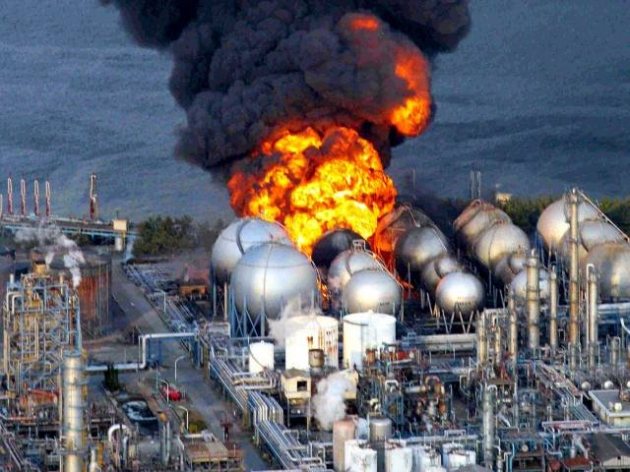On March 11, 2011, a 45-foot tsunami hit Japan as a result of a 9.0 earthquake on the Richter scale. The tsunami hit three cooling towers and disabled their power, causing them to melt within three days. Another cooler was written off as damage in addition to those three melted coolers. The earthquake caused over 19,000 lives, but the power plants survived the earthquake with minimal damage. The tsunami, however, caused considerable damage. When the plants were built, it was believed that tsunamis this large were highly unlikely to come to that area, but with more research we know now that those early estimations were incorrect. Because of this tsunami and the consequent nuclear disaster, more than 30,000 people had to be evacuated out of the most dangerous areas. Although the earthquake and consequent tsunami occurred on March 11th, it took until the 12th for workers to discover radioactive material leaking out of the front entrance. The internal pressure was too much for the plant, especially with the coolers having melted, so it expelled toxic materials to lessen the pressure. It has been estimated that the amount of toxic materials is about 20% of the toxic materials that were emitted at the Chernobyl disaster.

(Fukushima Daiichi disaster. Source: FukushimaPic.jpg)
Since the nuclear plants were shut down after this disaster, Japan has gotten about 90% of its energy from fossil fuels, the majority of which were imported from the Middle East. A recent plan was announced by the Japanese government explaining they will reopen their shut down nuclear plants with tightened safety regulations. The government also intends to continue to research renewable energy, like solar and wind. The citizens are still uneasy; it is difficult for anyone to support nuclear energy after what their country has already endured. And, on top of that, the continued use of coal and oil is not exactly stellar for the planet. But, with these prices rising, the government has become aware that they need to slow down their fossil fuel consumption, and to the great discomfort of many of their citizens, have decided that nuclear energy is again the answer.
Sources:
http://www.world-nuclear.org/info/safety-and-security/safety-of-plants/fukushima-accident/
http://fukushimaontheglobe.com/the-earthquake-and-the-nuclear-accident/whats-happened
http://www.wsj.com/articles/japan-struggles-to-find-balanced-energy-strategy-1431545581
Great post, you have pointed out some fantastic points , I likewise think this s a very wonderful website